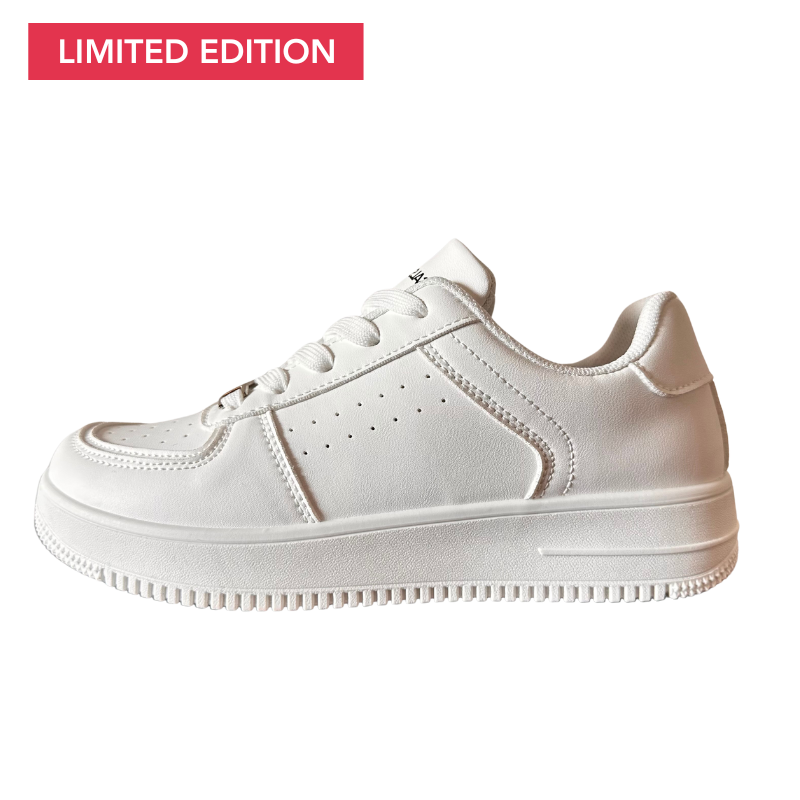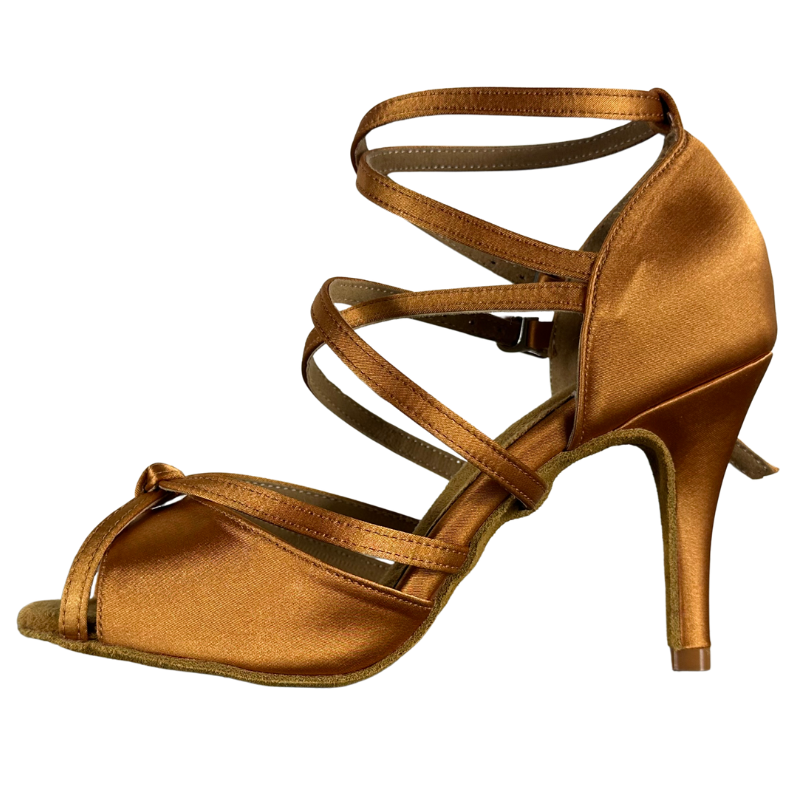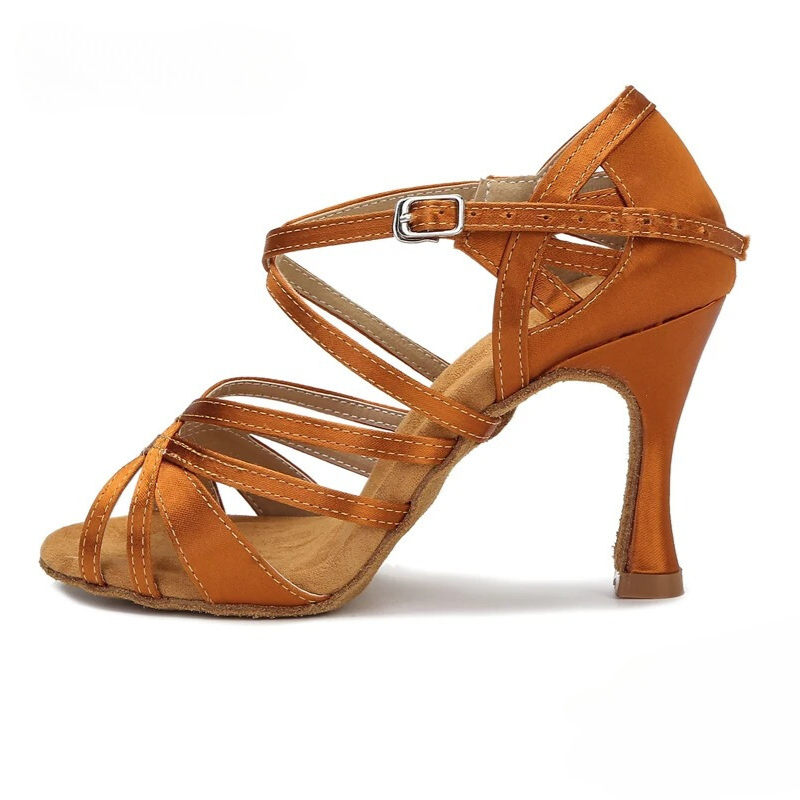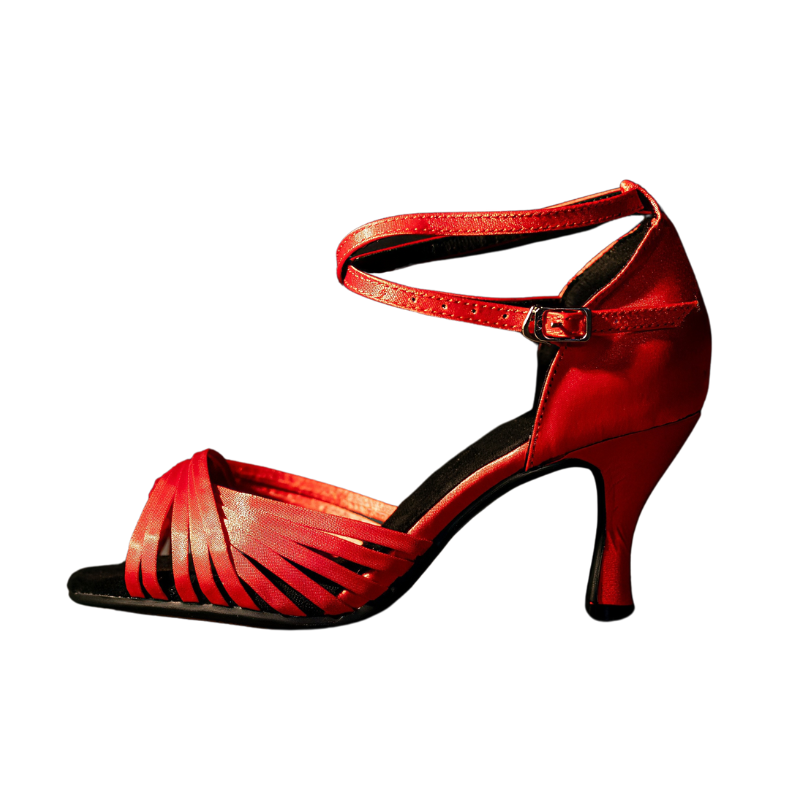Guide pour les débutant.e.s en danses latines
Vous ne savez pas quelle hauteur ou type de talon vous conviendra le mieux, ni quelle semelle choisir pour faciliter vos premiers pas ? Rassurez-vous, vous n’êtes pas seul.e ! Ce guide est spécialement conçu pour répondre à toutes vos interrogations et vous aider à faire un choix éclairé. Que vous recherchiez stabilité, confort ou performance, nous vous accompagnons pas à pas pour trouver la paire idéale adaptée à vos besoins en tant que débutant.e.
The video guide
Type de talon recommandé
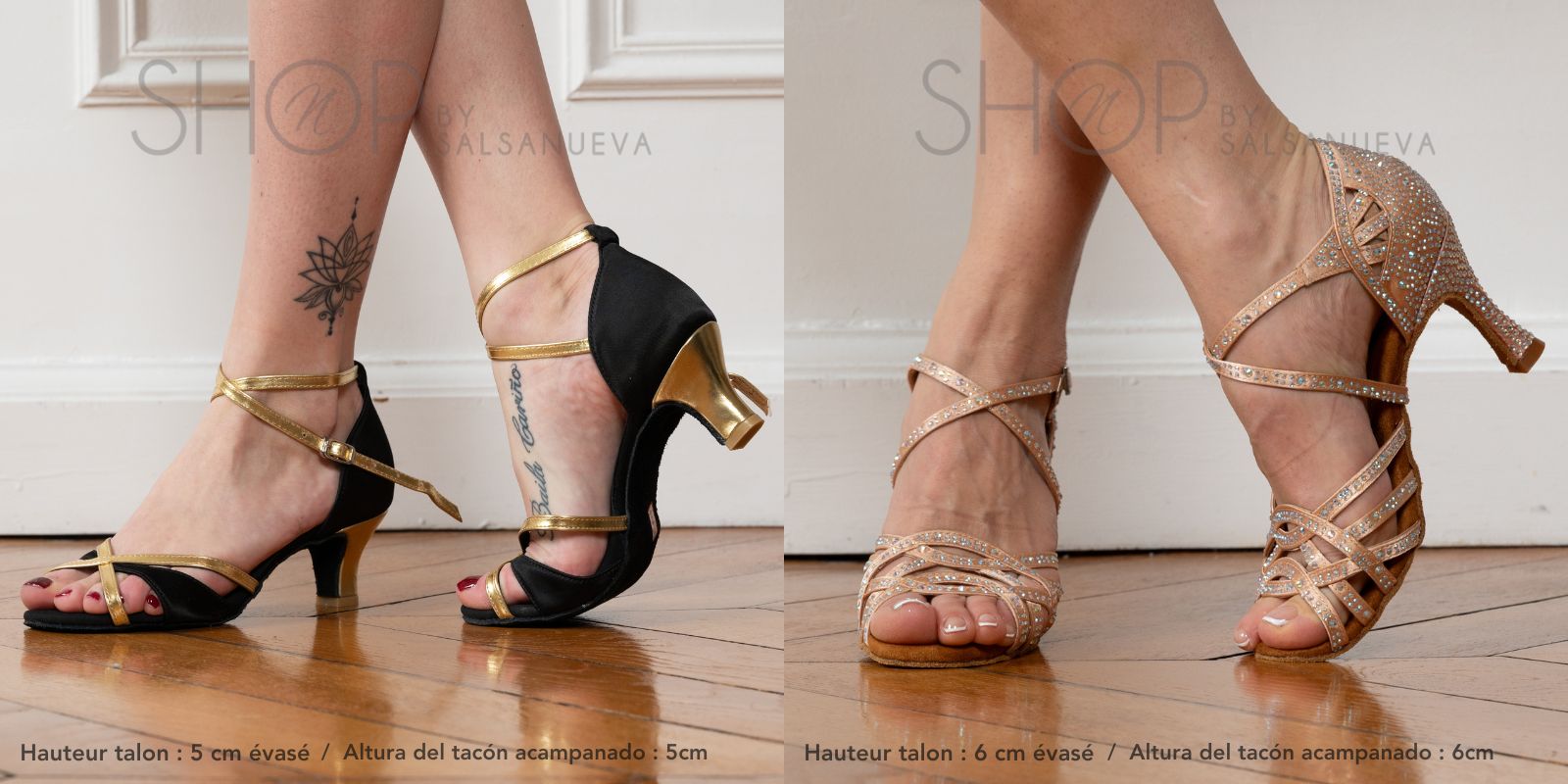
Pour un confort optimal, privilégiez les talons évasés. Un talon évasé est plus fin au milieu et s'élargit vers le bas, ce qui permet de mieux répartir votre poids et d’offrir une meilleure stabilité pendant la danse. Cette structure particulière aide à prévenir les chutes et à maintenir un bon équilibre, crucial pour les mouvements dynamiques des danses latines.
Les talons évasés sont idéaux pour les débutant.e.s car ils offrent une sécurité accrue et facilitent l'apprentissage des techniques de base sans compromettre le style et l'élégance de vos mouvements. En réduisant le risque de déséquilibre, ils permettent aux débutant.e.s de se concentrer sur l'apprentissage des figures sans craindre de perdre l'équilibre. De plus, leur design assure une meilleure adhérence au sol, essentielle lors des pirouettes et des déplacements rapides.
Choix de la hauteur du talon
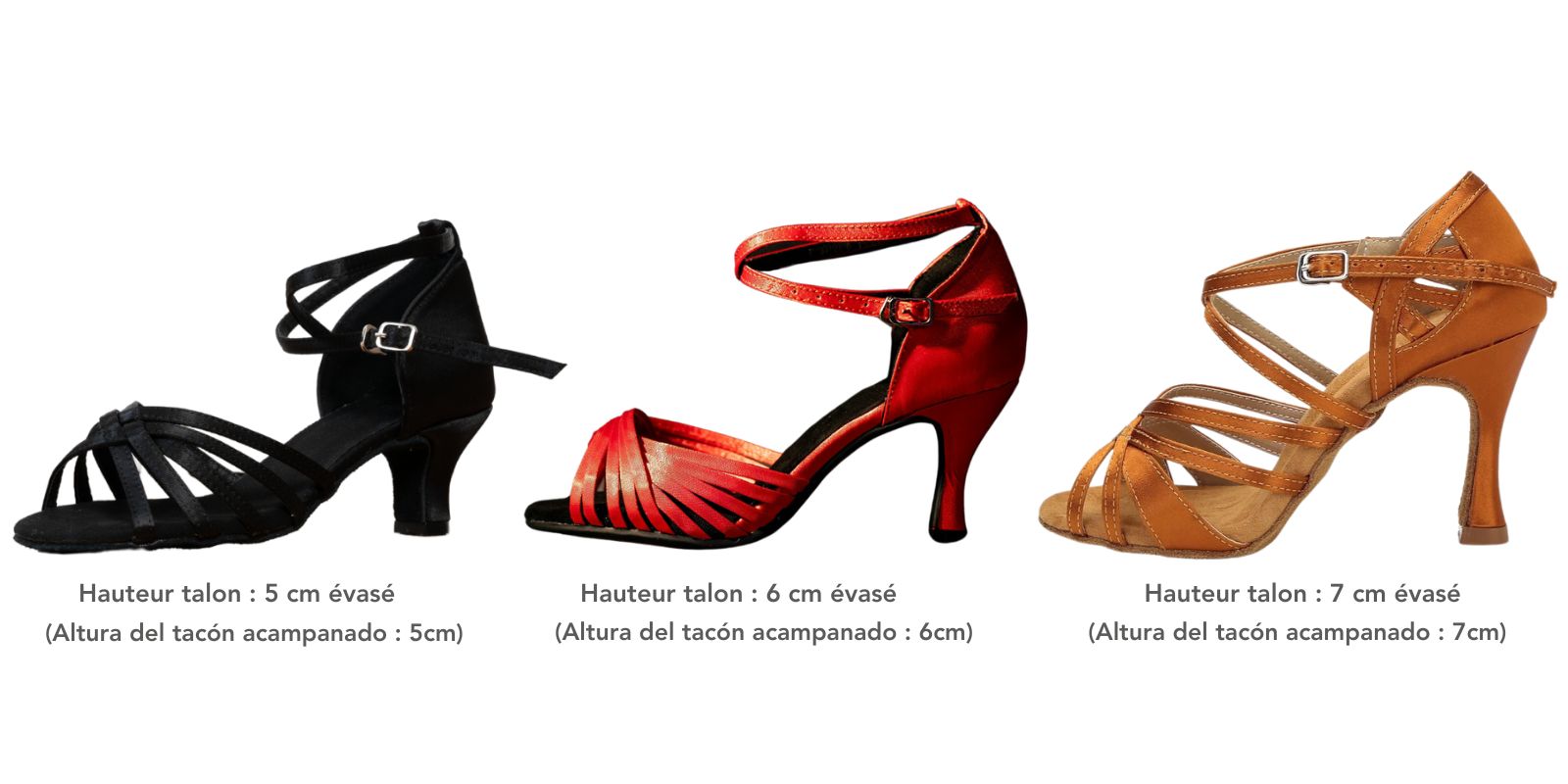
La hauteur du talon joue un rôle crucial, surtout pour les débutantes. Il est recommandé de commencer avec des talons de 5 cm. Cette hauteur est idéale pour s'habituer progressivement à porter des talons sans mettre trop de pression sur vos pieds. Les talons plus bas permettent d'apprendre les techniques de base en toute sécurité, en minimisant le risque de déséquilibre et de fatigue.
Au fur et à mesure que vous gagnez en expérience, vous pourrez augmenter la hauteur jusqu'à 7 cm ou plus, selon votre confort et votre aisance. Les talons plus hauts offrent une esthétique différente et peuvent améliorer certaines techniques de danse en ajoutant de la longueur à vos lignes et en accentuant vos mouvements. Cependant, il est important de ne pas précipiter cette transition. Prenez le temps de vous adapter à chaque nouvelle hauteur de talon pour éviter les blessures et maximiser votre confort.
Choisir la bonne hauteur de talon dès le début vous permet de construire une base solide et de développer votre confiance en vos compétences de danse. En progressant graduellement, vous pouvez trouver la hauteur de talon qui vous convient le mieux, en équilibrant esthétique et fonctionnalité.
Type de semelle recommandé
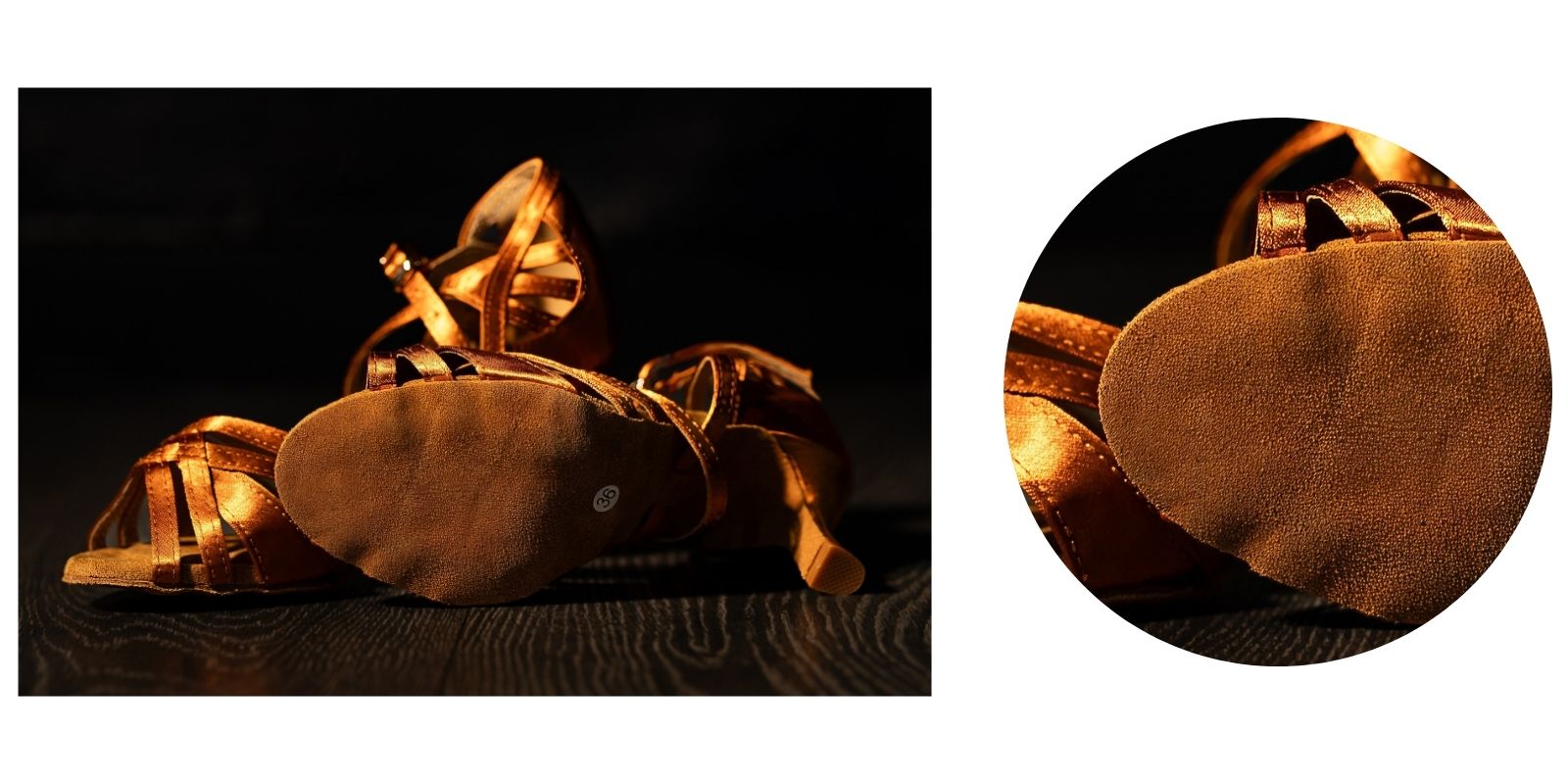
Semelle suède (Intérieur)
Le type de semelle intérieure est également essentiel. Optez pour des semelles en suède, qui absorbent la transpiration et évitent ainsi de glisser à l'intérieur de la chaussure. Contrairement aux semelles en plastique des chaussures de ville, les semelles en suède offrent une meilleure adhérence sur les parquets et les carrelages, assurant ainsi une meilleure performance lors de vos danses.
Les débutant.e.s dansent généralement en école, où les sols sont souvent lisses, en parquet, en lino ou en carrelage. Les semelles en suède sont idéales pour ce type de surface. Elles offrent une adhérence optimale, réduisant le risque de glissade et permettant des mouvements plus contrôlés et fluides. Cette adhérence est particulièrement importante lors des pivots, des tours et des déplacements rapides, qui sont fréquents dans les danses latines.
De plus, les semelles en suède aident à maintenir un bon équilibre en offrant une légère friction contre le sol, ce qui est crucial pour les débutant.e.s qui apprennent à contrôler leurs mouvements. Elles procurent également un confort supplémentaire en étant douces sous le pied, réduisant ainsi la fatigue lors de longues sessions de danse.
Style de chaussure avec maintien optimal
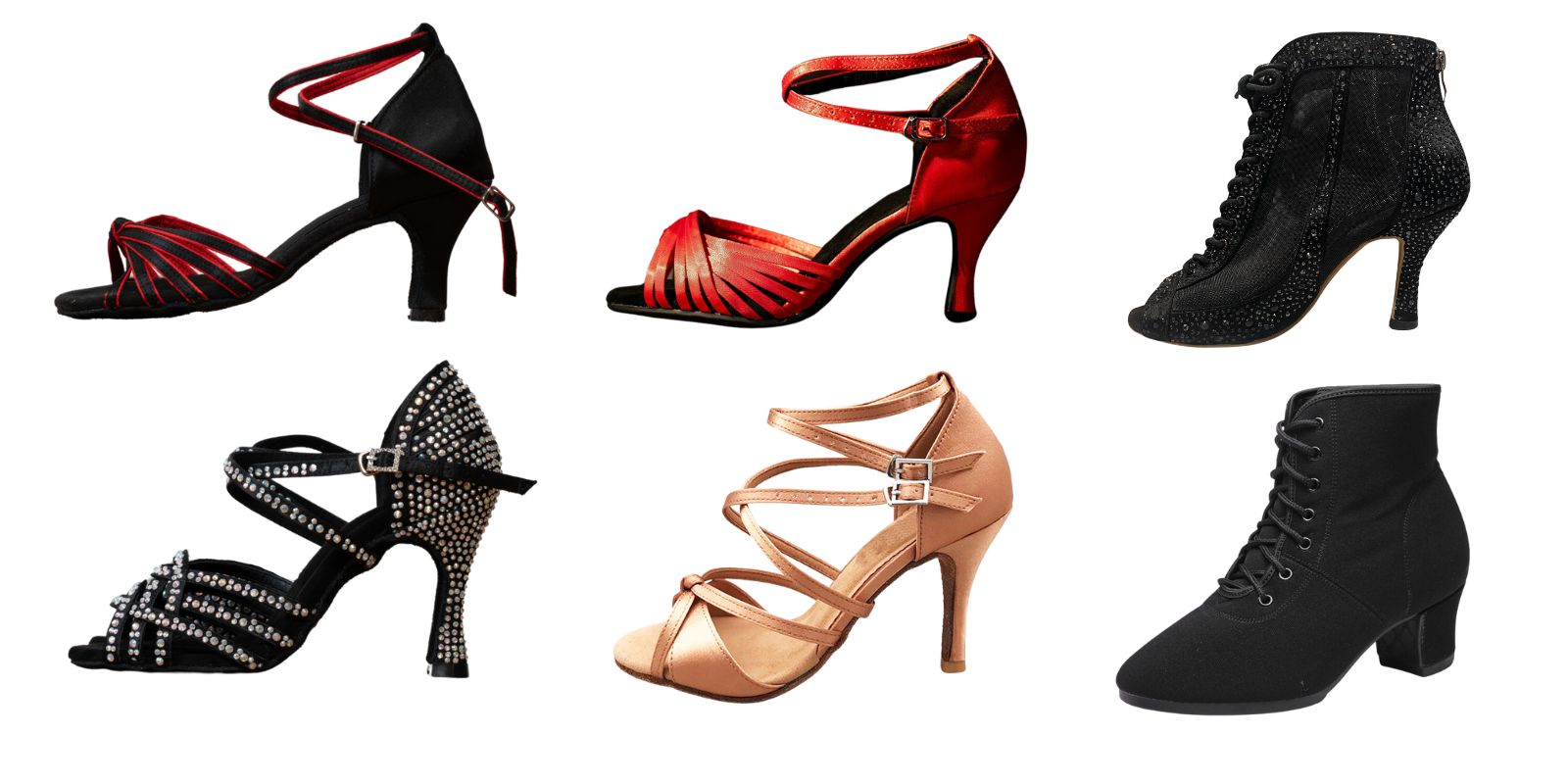
Les chaussures de danse à lanières
Les chaussures à lanières sont fortement recommandées pour les débutant.e.s en danse latine. Grâce à leurs lanières ajustables, elles offrent un maintien optimal du pied, réduisant le risque de glissade et de perte d'équilibre. Ce type de chaussure permet aux débutant.e.s de se sentir sécurisé.e.s tout en apprenant les mouvements de base.
Les lanières assurent une stabilité supplémentaire, essentielle pour maîtriser les déplacements et les pivots. En enveloppant bien le pied, elles permettent de danser en toute confiance, notamment sur des surfaces lisses comme le parquet, souvent présent dans les écoles de danse. Ce style est également parfait pour éviter les glissements accidentels, favorisant une progression plus rapide.
Les chaussures à lanières sont également conçues pour épouser la forme du pied et lui donner un soutien uniforme. Cela permet de mieux répartir le poids lors des mouvements, réduisant ainsi la fatigue et aidant à garder un bon équilibre. En plus d’être fonctionnelles, elles apportent une touche d'élégance grâce à leur design épuré et féminin.
Bottines de danse
Pour les débutant.e.s qui préfèrent un maintien renforcé, les bottines sont une excellente alternative. Elles couvrent davantage le pied et la cheville, offrant une stabilité accrue, particulièrement utile pour celles qui souhaitent s'entraîner intensivement sans risque de faux pas. Idéales pour l'apprentissage, les bottines apportent aussi un style distinctif et moderne.

